As you might have heard, in January 2024 I was chosen as the latest recipient of the Biscuit Factory Foundation Performers Grant. But what became of that in the end? What do you actually do with a grant? Let me walk you through what happened with this one!
I had two main goals with Poetry Bites – to encourage poets to engage with the work of local artists, and to give those poets a paid opportunity to perform their own work. You can see four such poets in the image below, each standing next to an artwork that they responded to with a spellbinding new poem! In order, they are Ann Porro with Damien Hirst’s Dog (by Michael Barrett), Charlie Care with Exit Pursued by Bear (by Deborah Snell), Penny Blackburn with Through Harvested Fields (by Rob van Hoek) and Alex Skinner with St Mary’s Lighthouse (by Ian Mitchell).
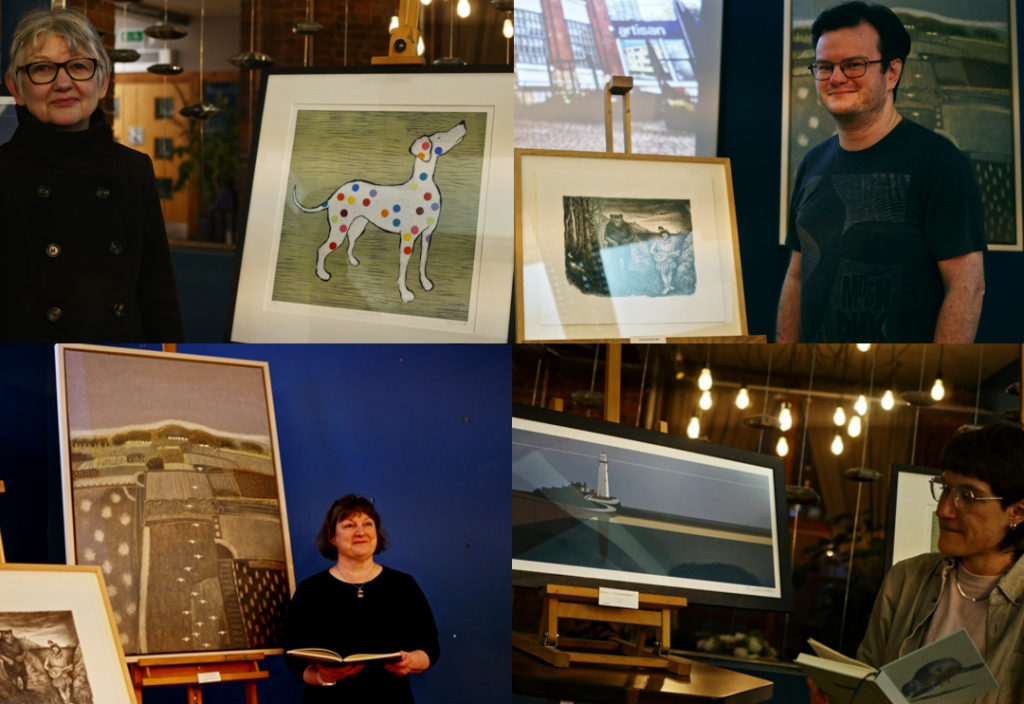
Pictures by Robin Fodor.
Each of these poems was performed to a lively audience at the Biscuit Factory Gallery itself. But how does an event like that come together?
It started with a series of writing workshops. My approach to workshops is pretty simple – combine a few carefully chosen writing prompts and simple exercises, and let the miracle mind-trick of a focused group activity work its magic. The challenge is finding inspiration and cultivating the right atmosphere for free-flowing ideas, but with the Biscuit Factory very kindly providing a quiet space so close to a whole gallery of wonderful art, that part was fully taken care of already.
I was keen to take advantage of this unique opportunity by encouraging poets to step out onto the gallery floors and look for works that inspired them, and perhaps also consider them in a new ways. The first major challenge was to find an artwork containing a person or creature, and try writing from their perspective, while the second was to find a very different piece, the sort that you might not normally engage with, and describe the kind of feelings that it evokes.
I knew this would be a fun exercise for both new and experienced writers, but I underestimated just how fruitful it would be for everyone involved. Of the 22 attendees, all 22 said they enjoyed the workshop, and 20 said that they picked up something from the workshop that they thought would help them improve their writing practice. 20 also said that they produced a new poem or idea during the workshops which they were excited to develop further. 19 also said that they were glad to have discovered the Biscuit Factory as a local cultural venue, and planned to return! (the other 3 were already big fans)
”Hearing all the other attendees’ individual approaches gave me fantastic insight and new perspectives on the creative process and ways of responding to artworks,” said one, while another reported: “I have 3 new poems, 1 new idea to work on.” And most gratifyingly from another participant: “Calm space, great host. Really enjoyed the variety of the exercises and it not being prescriptive. Sparked my confidence again!”
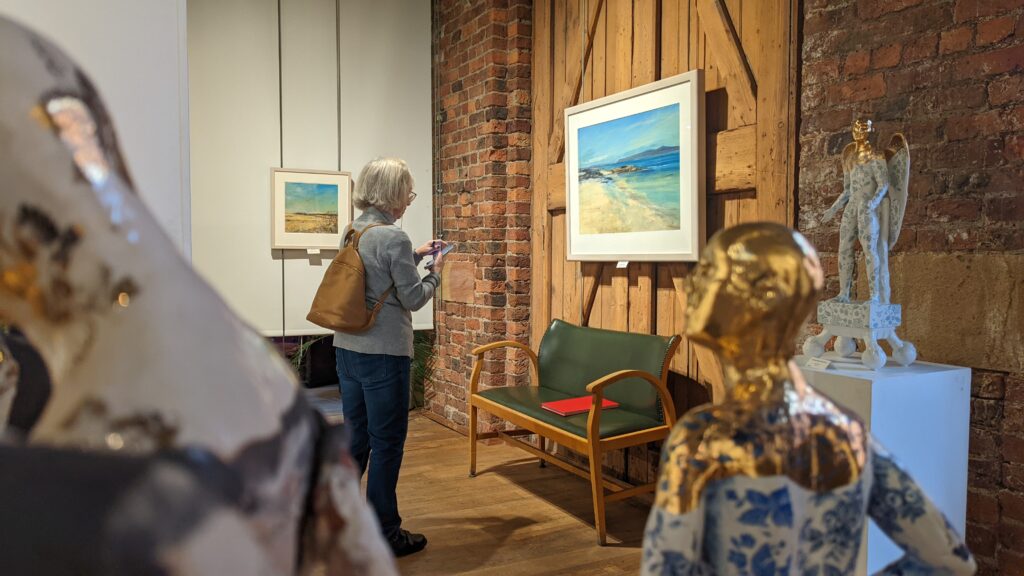
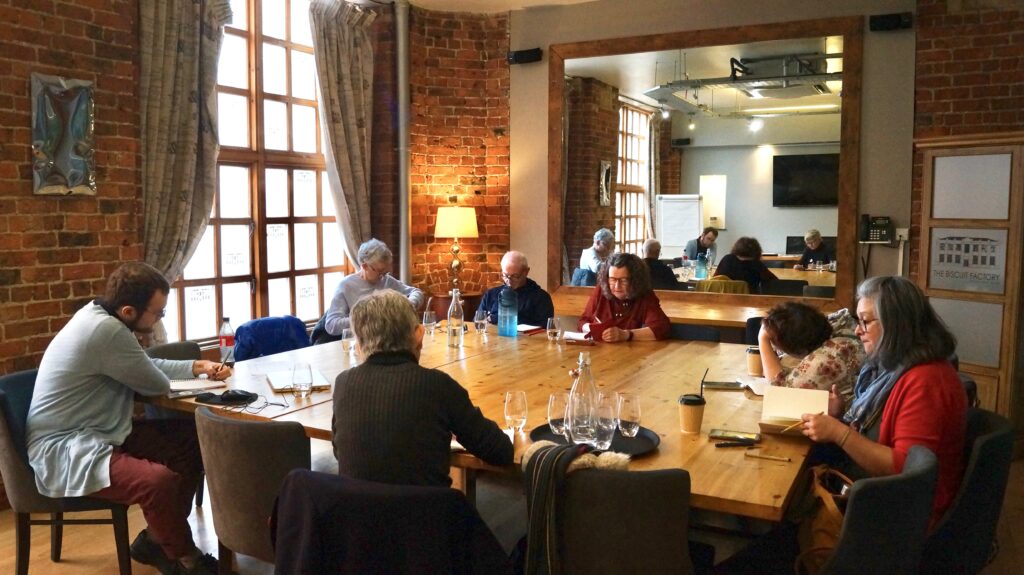
Pictures by Charlie Care.
I also learned just as much from the participants myself – did you know that there’s a word for a creative description of a pre-existing piece of art? It’s called ‘ekphrasis‘, making the output of this programme ‘ekphrastic poetry‘. It turns out there’s a whole rich tradition of creators seeking to capture the essence of an artwork in their own medium, and in doing so, giving new life to the original or creating a wonderful new piece of their own. Isn’t that neat? Everyday’s a schoolday.
During my time at the Biscuit Factory, I wrote four colourful short poems in conversation with art created by Chris Cyprus, Andrew Tyzack, Marissa Weatherhead and Justine Warner. I also considered the actual process of appreciating art. I’m no fine art scholar, and I often feel that all-too-common anxiety while exploring an art gallery; is this going over my head? Am I missing something? Ultimately I believe there’s many different ways to engage with a piece of media, and I don’t think you can do it ‘wrong’ as long as you approach it earnestly. The result was the poem ‘A Penny for Your Thoughts’, which I produced into a short-form video featuring 23 different artworks displayed around the gallery.
Given how many talented writers reported that they had discovered new sources of inspiration, I was keen to give them an opportunity to share their output. Several had expressed interest in participating at the final performance event – which took place on Friday the 15th of March – and since I had the rare benefit of funding I was determined to make it a fully paid opportunity. So I booked four attendees as featured performers, encouraged as many others as I could to attend, and with the generous help of Biscuit Factory curators and staff members orchestrated an evening of poetry in the Artisan event space, surrounded by canvases displaying many of the artworks the poets had responded to in their work.
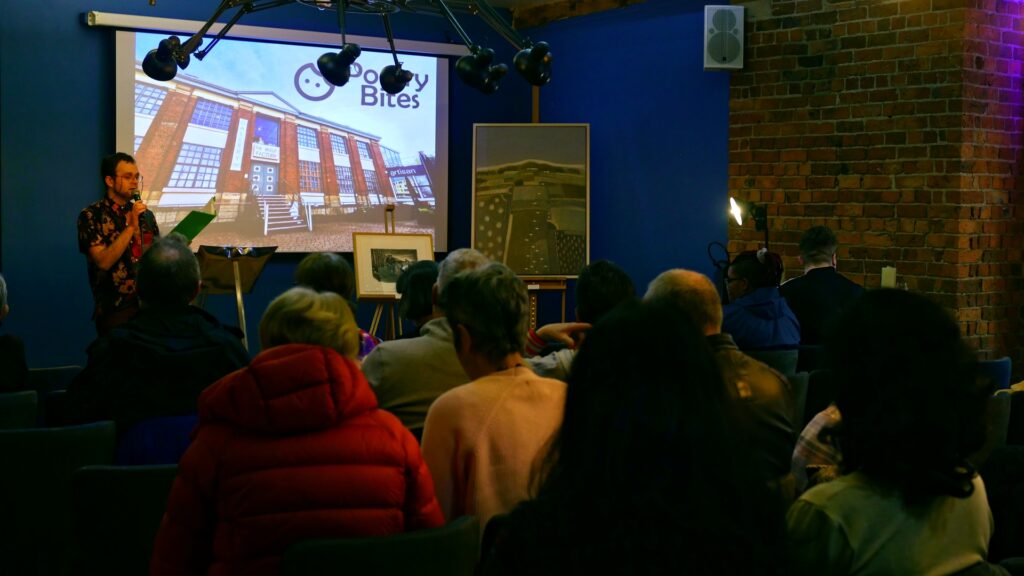
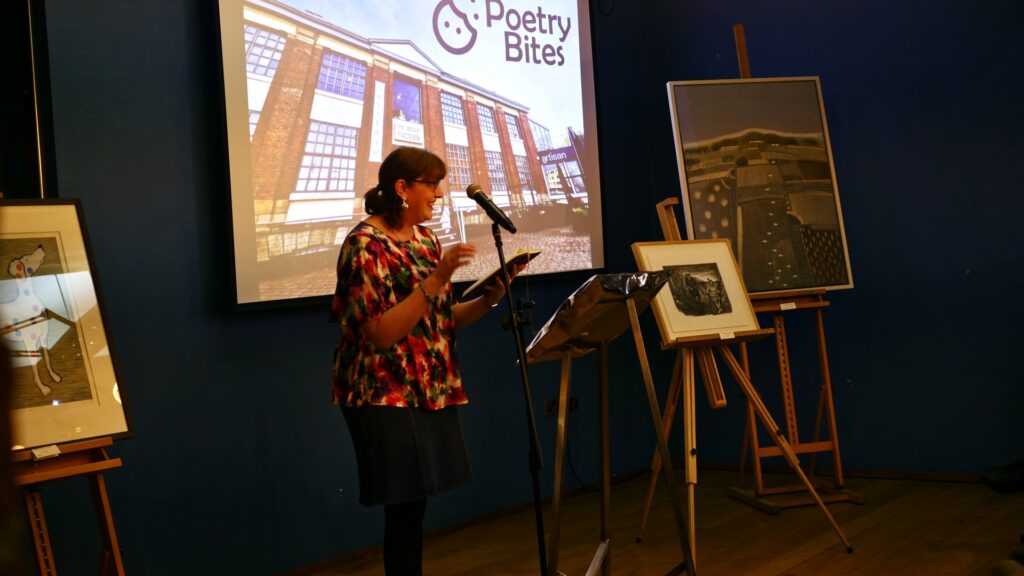
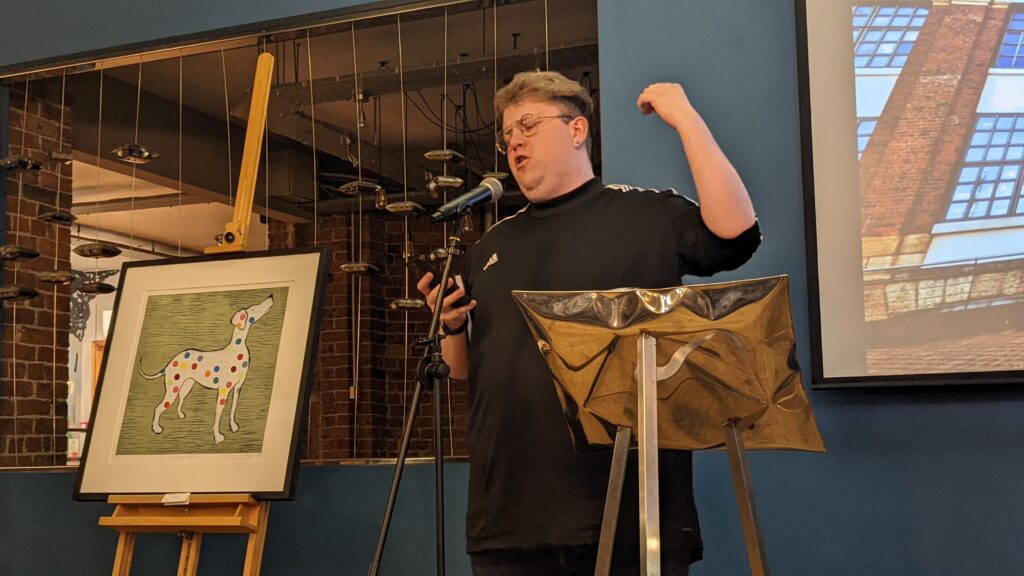
Pictures by Robin Fodor (top and bottom left) and Charlie Care (bottom right).
And how did it go? Honestly, I couldn’t be happier. The Biscuit Factory made for such a beautiful venue, which quickly filled up with a lovely crowd of all ages, many of whom had never been to either the gallery or a live poetry event before! It’s rare that a free event is able to pay its performers, but the grant gave me more than enough to pay all ten performers (three of whom said this was their first paid performance!), and thanks to the generous donations of audience members I was an even able to pay the headliners more than I had initially promised.
One audience member gave me the wonderful feedback: “What a great evening and a fab collection of poems, the use of the gallery collection worked so well and your inspiration really got people to produce such imaginative work!”. I also received a brilliant writeup from writer, facilitator and educator Hilary Elder:
“Lewis wrote poetry inspired by the artwork. More, he ran workshops supporting others (including me) to write poetry inspired by the artwork. More even than that, he organised a poetry evening for writers to share their work, including the poems we’d written inspired by the artwork. It was a joyous project and a grand night out. The Biscuit Factory showcases a huge variety of art and craft, and writers responded to different works in different ways, leading to an evening of sharing that was also massively varied in style and content, but that held together through the theme of responding to art.”
In closing, I consider Poetry Bites to have been a very successful experiment; one that brought two artforms together along with a vibrant community of talented writers and members of the public together in one of Newcastle’s landmark cultural venues. Spending time at the Biscuit Factory and creating poetry in conversation with visual art has been greatly beneficial to my growing creative practice, and I am proud to have given so many others the chance to grow and develop in similar ways.
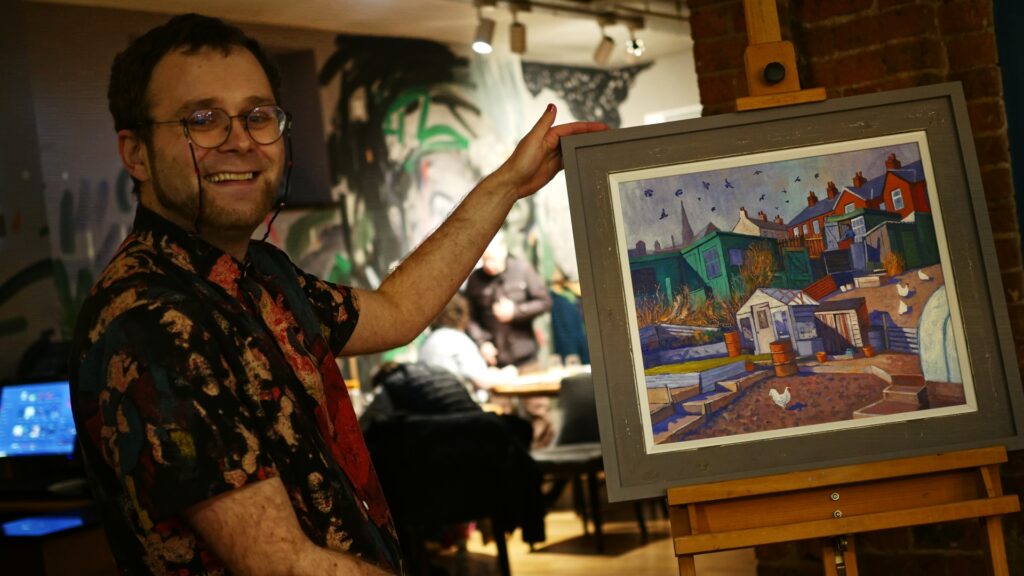
Picture by Robin Fodor.
